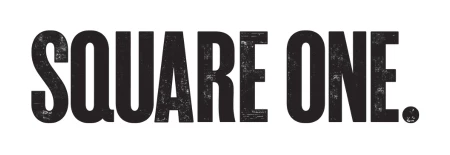Partner Article
Trademarking a Kit Kat? How businesses can protect themselves in a competitive market
The ruling made last month by the UK Intellectual Property Office that Nestle could not protect the shape of its four-finger Kit Kat bar under trademark was remarkable for a number of reasons.
Firstly, it showed that despite the fact Nestle pioneered the design of the Kit Kat more than 75 years ago, they were unable to rebuff a challenge from rival confectioner Cadbury’s over its trademark application.
Secondly, the ruling was entirely at odds with the verdict of the Community Trade Mark Office in December last year, when Nestle was given exclusivity of the design of its product in 28 EU member states.
Lastly, it shows the increasing lengths that businesses will now go to in order to protect themselves in an increasingly competitive market, where the stakes have never been higher – brands of the global magnitude of Nestle and Cadbury’s are so keen to ensure neither has any form of advantage the other cannot overrule for fear of losing precious market share.
Furthermore, it again emphasises the importance of registering a trademark at the earliest opportunity – but also proves that a challenge to an application can be successful, even when taking on an iconic and globally-known brand like Kit Kat.
The ruling, made on July 1, is the latest round in a long-running dispute between Nestle and Cadbury’s. The first blow was struck back in 2006, when the Swiss confectionary giant attempted to register the shape of its Kit Kat as a trademark – a move which was appealed by its UK rival.
Although the EU-wide trademark has since been granted, the decision of the UK IPO – which is expected to be appealed by Nestle – means that the legal battle may continue for some time to come.
The decision was made on the basis that the four-fingered Kit Kat has a functional rather than aesthetic design, and that consumers relied on the word ‘Kit Kat’ and associated branding to properly distinguish the product. The IPO, in conclusion, found that the three-dimensional four-fingered chocolate design did not have sufficient distinctive character to warrant registration as a trademark.
While a Kit Kat may appear instantly recognisable to consumers, this case helps to highlight that this kind of recognition alone is not enough. Nestle told the hearing that it had spent between £3m and £11m each year promoting Kit Kat between 1996 and 2007, and between £850,000 and £4.4m annually from 2008 to 2010, but without a trademark to protect its design, there is effectively nothing to stop Cadbury’s or any other confectionary brand emulating the shape of the product.
Quite what impact the conflict between the UK IPO and the CTMO rulings will have remains to be seen – but what is very clear from this case is the importance of having a trademark in place. For businesses in the developmental stage of their first product, to multi-billion pound entities like Nestle and Cadbury’s, the importance of having a trademark in place to cannot be underestimated.
TRADEMARK TIPS
- Check no-one is already using your brand or brand idea
- Brand registration is not essential, but will help protect you and your business from competitors
- A company or web address alone is not sufficient and will not stop someone devising or using a very similar brand or brand name
- Investing in expert professional advice is always advisable to ensure you, your brand and your business are fully protected legally.
David Lant is an Associate at Sintons and specialises in intellectual property disputes.
To speak to David about trademarks or any other related matter, contact him on 0191 2263746 or email david.lant@sintons.co.uk
This was posted in Bdaily's Members' News section by Profile Removed by Request .
Enjoy the read? Get Bdaily delivered.
Sign up to receive our popular morning National email for free.








 The real cost of tendering for construction SMEs
The real cost of tendering for construction SMEs
 A welcome step forward – but let’s keep pushing
A welcome step forward – but let’s keep pushing
 Industrial strategy 'can drive business forward'
Industrial strategy 'can drive business forward'
 Industrial strategy 'can be game-changer we need'
Industrial strategy 'can be game-changer we need'
 Driving skills forward with near £100,000 boost
Driving skills forward with near £100,000 boost
 What pension rule changes could mean for you
What pension rule changes could mean for you
 North East can't be an afterthought in AI future
North East can't be an afterthought in AI future
 Understanding the impact of the Procurement Act
Understanding the impact of the Procurement Act
 Is the UK losing ground in life sciences investment?
Is the UK losing ground in life sciences investment?
 Construction workforce growth can't be a quick fix
Construction workforce growth can't be a quick fix
 Why it is time to give care work a makeover
Why it is time to give care work a makeover
 B Corp is a commitment, not a one-time win
B Corp is a commitment, not a one-time win